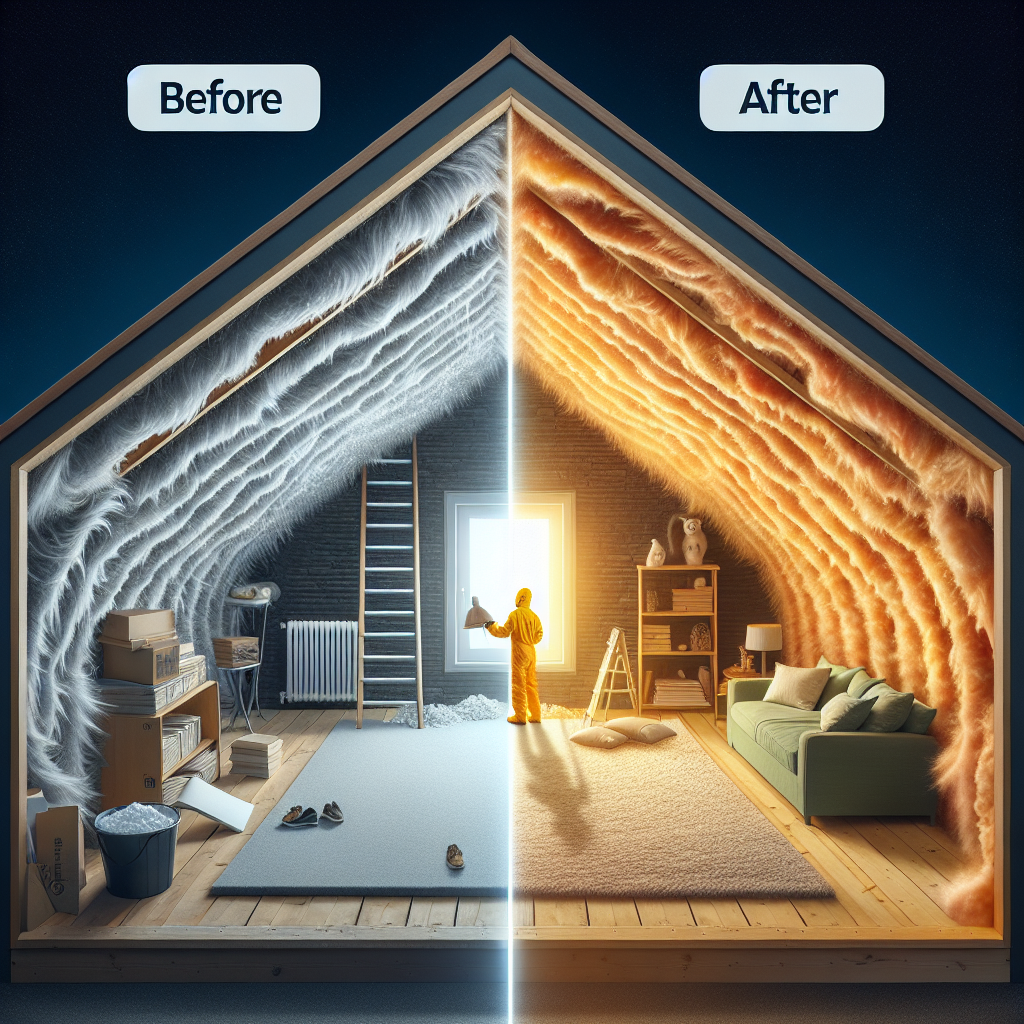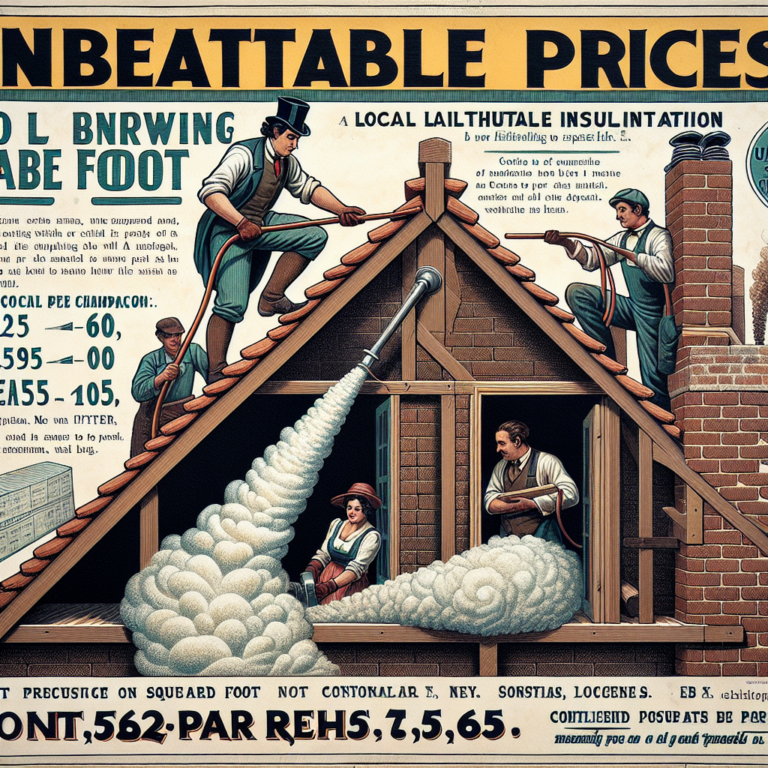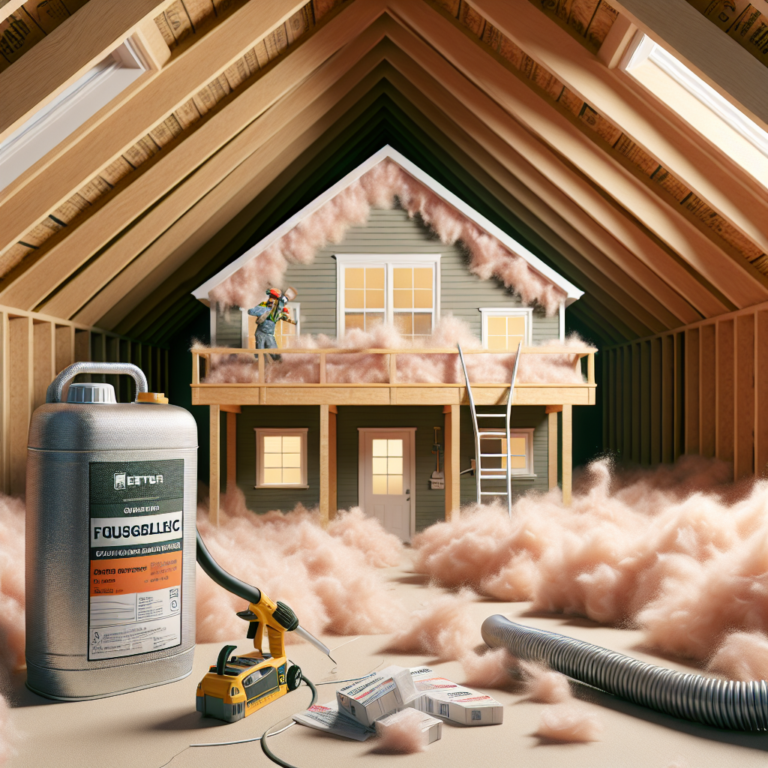Table of Contents
“Protect your home and save on energy costs with Attic Protector fiberglass blown in insulation.”
Introduction
Attic protector fiberglass blown in insulation is a type of insulation material that is commonly used in attics to improve energy efficiency and reduce heating and cooling costs. It is made of tiny glass fibers that are blown into the attic space using specialized equipment. This type of insulation is known for its effectiveness in filling small gaps and crevices, providing a seamless layer of insulation that can help keep the home comfortable year-round. In this introduction, we will explore the benefits and features of attic protector fiberglass blown in insulation and how it can benefit homeowners.
Benefits of Attic Protector Fiberglass Blown In Insulation
Attic insulation is an essential component of any home’s energy efficiency. It helps to regulate the temperature inside the house, keeping it cool in the summer and warm in the winter. However, not all types of insulation are created equal. One type that has gained popularity in recent years is attic protector fiberglass blown in insulation. This type of insulation offers numerous benefits that make it a top choice for homeowners looking to improve their home’s energy efficiency.
One of the main benefits of attic protector fiberglass blown in insulation is its superior insulating properties. Fiberglass is a material made of tiny glass fibers that trap air, creating pockets of insulation. When blown into the attic, it fills in all the nooks and crannies, providing a seamless layer of insulation. This helps to prevent air leaks and keeps the temperature inside the house consistent. As a result, homeowners can enjoy a more comfortable living space without having to constantly adjust the thermostat.
Another advantage of attic protector fiberglass blown in insulation is its ability to resist moisture. Unlike other types of insulation, fiberglass does not absorb water. This is especially important in the attic, where moisture can easily seep in through the roof. Moisture can not only damage the insulation but also lead to mold and mildew growth, which can be harmful to both the home and its occupants. With attic protector fiberglass blown in insulation, homeowners can rest assured that their attic will remain dry and free from any potential water damage.
In addition to its insulating and moisture-resistant properties, attic protector fiberglass blown in insulation is also fire-resistant. Fiberglass is made of inorganic materials, which means it does not burn. This can provide homeowners with peace of mind, knowing that their home is protected in case of a fire. Furthermore, fiberglass insulation does not release toxic fumes when exposed to high temperatures, making it a safer option for homes.
One of the most significant benefits of attic protector fiberglass blown in insulation is its cost-effectiveness. This type of insulation is relatively inexpensive compared to other options, such as spray foam or cellulose. Additionally, its installation process is quick and easy, which can save homeowners both time and money. With attic protector fiberglass blown in insulation, homeowners can improve their home’s energy efficiency without breaking the bank.
Another advantage of attic protector fiberglass blown in insulation is its eco-friendliness. Fiberglass is made of recycled materials, making it a sustainable choice for homeowners who are conscious of their environmental impact. Additionally, its energy-saving properties can help reduce the carbon footprint of a home, making it a more environmentally friendly option compared to other types of insulation.
Lastly, attic protector fiberglass blown in insulation can also improve the overall value of a home. With its numerous benefits, this type of insulation can make a home more attractive to potential buyers. It can also help to increase the home’s energy efficiency rating, which can be a significant selling point in today’s environmentally conscious market.
In conclusion, attic protector fiberglass blown in insulation offers a wide range of benefits that make it a top choice for homeowners. Its superior insulating properties, moisture resistance, fire resistance, cost-effectiveness, eco-friendliness, and potential to increase a home’s value make it a smart investment for any homeowner looking to improve their home’s energy efficiency. With attic protector fiberglass blown in insulation, homeowners can enjoy a more comfortable living space, lower energy bills, and a more environmentally friendly home.
How to Install Attic Protector Fiberglass Blown In Insulation with Home Depot AttiCat

Attic insulation is an essential component of any home’s energy efficiency. It helps to keep the temperature inside your home consistent, reduces energy costs, and can even improve the overall comfort of your living space. One popular type of attic insulation is fiberglass blown in insulation, and with the help of Home Depot’s AttiCat machine, it can be easily installed in your attic.
Before we dive into the installation process, let’s first understand what attic protector fiberglass blown in insulation is. This type of insulation is made up of tiny glass fibers that are blown into your attic using a special machine. The fibers create a thick layer of insulation that helps to trap air and prevent heat from escaping your home. This insulation is also known as loose-fill insulation, as it is not pre-cut into specific shapes like other types of insulation.
Now, let’s move on to the installation process. The first step is to gather all the necessary materials. You will need the AttiCat machine, fiberglass blown in insulation, a ladder, a utility knife, a staple gun, and protective gear such as gloves, goggles, and a dust mask. It is important to wear protective gear as the insulation fibers can irritate the skin and eyes.
Next, you will need to prepare your attic for installation. This includes clearing out any debris or objects that may be in the way. It is also important to ensure that there are no leaks or holes in your attic, as this can affect the effectiveness of the insulation. If you do find any leaks or holes, be sure to seal them before proceeding with the installation.
Now it’s time to set up the AttiCat machine. The machine comes with a hose that will be used to blow the insulation into your attic. Attach the hose to the machine and place the machine near the attic entrance. You may need to use an extension cord to reach the desired location.
Before starting the machine, it is important to read the instructions carefully. The machine has a dial that allows you to adjust the amount of insulation being blown into your attic. It is recommended to start with a lower setting and gradually increase it as needed. This will ensure that the insulation is evenly distributed and not too compacted.
Once the machine is set up and running, it’s time to start blowing in the insulation. Begin at the farthest corner of your attic and work your way towards the entrance. Use the hose to blow the insulation into the desired areas, making sure to cover all corners and crevices. It is important to maintain a consistent depth of insulation throughout your attic for maximum effectiveness.
As you work, be sure to wear your protective gear and take breaks as needed. It is also a good idea to have someone else assist you, as the installation process can be physically demanding.
Once you have finished blowing in the insulation, use a utility knife to trim any excess insulation that may be sticking out. You can also use a staple gun to secure the insulation in place, especially around the edges of your attic.
In conclusion, installing attic protector fiberglass blown in insulation with Home Depot’s AttiCat machine is a relatively simple process that can greatly improve the energy efficiency of your home. By following these steps and taking the necessary precautions, you can have a well-insulated attic in no time. Remember to regularly check and maintain your attic insulation to ensure its effectiveness in keeping your home comfortable and energy-efficient.
Comparing Attic Protector Fiberglass Blown In Insulation to Other Insulation Options
Insulation is an essential component of any home, providing a barrier against heat loss and gain, as well as reducing energy costs. With so many insulation options available, it can be overwhelming to choose the right one for your home. One option that has gained popularity in recent years is attic protector fiberglass blown in insulation. In this article, we will compare this type of insulation to other options, highlighting its benefits and drawbacks.
Firstly, let’s understand what attic protector fiberglass blown in insulation is. It is made of tiny glass fibers that are blown into the attic space using specialized equipment. This creates a thick layer of insulation that fills all the nooks and crannies, providing a seamless barrier against heat transfer. This type of insulation is known for its high R-value, which measures the insulation’s ability to resist heat flow. The higher the R-value, the more effective the insulation is.
One of the main advantages of attic protector fiberglass blown in insulation is its ability to cover hard-to-reach areas. Unlike traditional batt insulation, which comes in pre-cut sheets, blown-in insulation can be easily distributed in tight spaces, ensuring complete coverage. This makes it an ideal choice for attics with irregular shapes or obstacles such as pipes and ductwork. Additionally, the installation process is quick and efficient, saving both time and labor costs.
Another benefit of attic protector fiberglass blown in insulation is its resistance to moisture. Fiberglass is naturally water-resistant, making it a suitable choice for attics prone to moisture buildup. This type of insulation also does not promote mold growth, making it a healthier option for your home. However, it is essential to note that proper ventilation is still necessary to prevent moisture buildup in the attic.
When it comes to cost, attic protector fiberglass blown in insulation falls in the mid-range compared to other options. It is more expensive than traditional batt insulation but less costly than spray foam insulation. However, its high R-value and energy-saving benefits make it a cost-effective choice in the long run. It is also worth mentioning that blown-in insulation can be installed on top of existing insulation, making it a budget-friendly option for homeowners looking to upgrade their insulation.
On the other hand, one of the drawbacks of attic protector fiberglass blown in insulation is its potential for settling. Over time, the insulation may compress and settle, reducing its effectiveness. This can be prevented by ensuring proper installation and using the correct amount of insulation for your attic’s size. Additionally, blown-in insulation can be challenging to remove or replace, making it a more permanent solution compared to batt insulation.
Another insulation option that is often compared to attic protector fiberglass blown in insulation is spray foam insulation. While spray foam has a higher R-value and provides an airtight seal, it is also more expensive and requires professional installation. Additionally, spray foam can be challenging to remove or replace, making it a less flexible option for homeowners.
In conclusion, attic protector fiberglass blown in insulation offers many benefits, including complete coverage, moisture resistance, and cost-effectiveness. However, it is essential to consider its potential for settling and the difficulty of removal or replacement. Ultimately, the best insulation option for your home will depend on your budget, the size and shape of your attic, and your energy-saving goals. Consulting with a professional insulation contractor can help you make an informed decision and ensure proper installation for maximum effectiveness.
Q&A
1) What is attic protector fiberglass blown in insulation?
Attic protector fiberglass blown in insulation is a type of insulation material that is used to insulate attics. It is made of tiny glass fibers that are blown into the attic space using a special machine. This creates a layer of insulation that helps to keep the attic and the rest of the house warm in the winter and cool in the summer.
2) How does attic protector fiberglass blown in insulation work?
The tiny glass fibers in attic protector fiberglass blown in insulation create pockets of air that trap heat and prevent it from escaping through the attic. This helps to keep the temperature in the attic and the rest of the house more consistent, reducing the need for heating and cooling. It also helps to prevent drafts and air leaks, making the home more energy efficient.
3) What are the benefits of using attic protector fiberglass blown in insulation?
There are several benefits to using attic protector fiberglass blown in insulation. It is a cost-effective way to insulate your attic, as it can be blown in quickly and easily without the need for extensive labor. It also helps to improve energy efficiency, reduce utility bills, and create a more comfortable living environment. Additionally, it is non-combustible and does not settle over time, providing long-lasting insulation for your home.
Conclusion
In conclusion, attic protector fiberglass blown in insulation is a highly effective and efficient way to insulate your attic. It provides excellent thermal resistance, is easy to install, and can help reduce energy costs. Additionally, it is made from recycled materials and is environmentally friendly. Overall, attic protector fiberglass blown in insulation is a great choice for homeowners looking to improve the energy efficiency and comfort of their homes.




